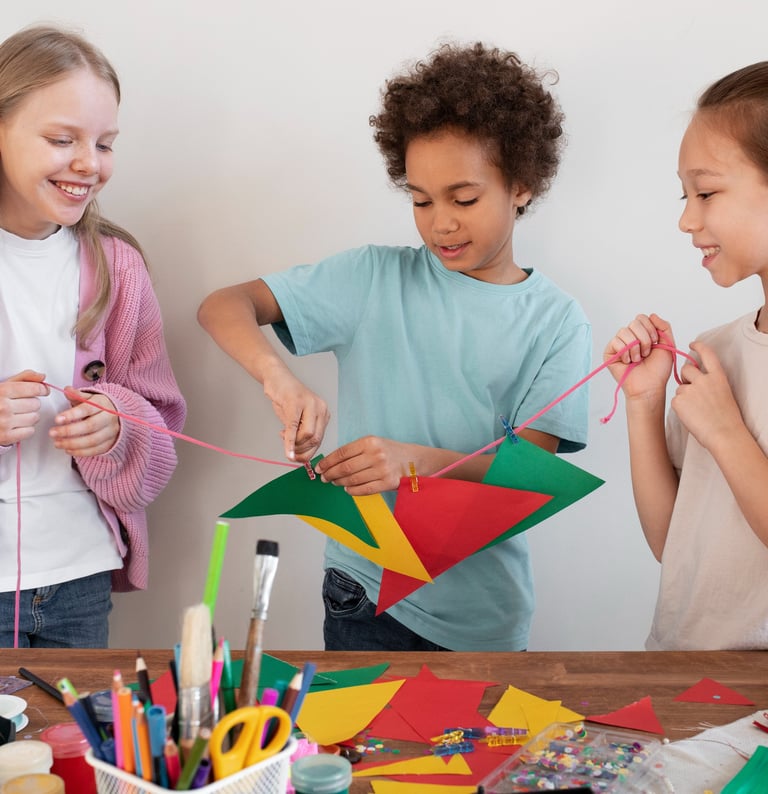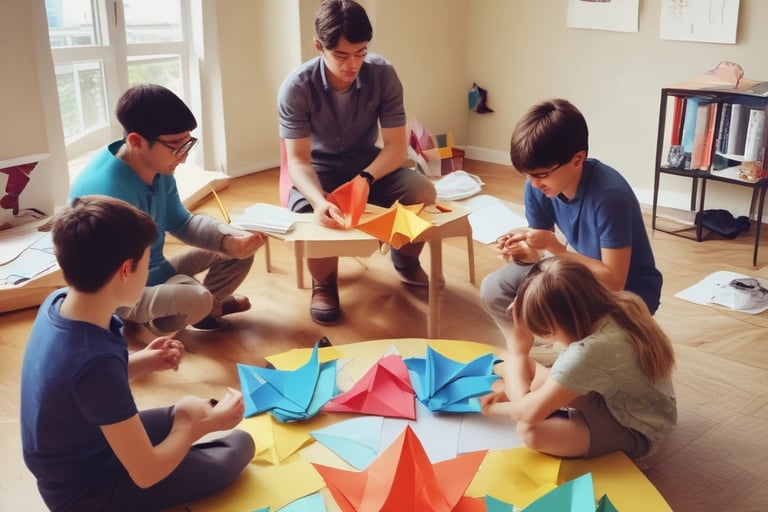Creating Significant Learning Enviroments- EDLD 5313
Transforming Teaching: Creating Significant Hybrid Learning Environments
In today’s dynamic educational landscape, the teacher’s role has evolved from content deliverer to designer of authentic, inclusive, and meaningful learning experiences. This blog and the work it showcases go beyond collecting academic assignments; they reflect a deep commitment to teaching that transforms, humanizes, and inspires. As a second-grade teacher and teacher educator, I’ve come to understand that hybrid learning is not merely a format; it’s a powerful pedagogical strategy to enhance literacy, foster engagement, and support students ethically and inclusively.
This space is grounded in the vision of Creating Significant Learning Environments (CSLE) (Harapnuik, 2021), which calls for the intentional design of learning spaces where students feel safe, engaged, and empowered to grow. Designing significant hybrid learning environments means creating experiences that are emotionally meaningful, culturally relevant, and deeply connected to students' lives. Rooted in frameworks such as Meaningful Learning (Ausubel, 1963), Backward Design (Wiggins & McTighe, 2005), and Universal Design for Learning (Nelson et al., 2021), this blog offers ideas, resources, and reflections to empower teachers to implement real change. Here, technology becomes more than a tool it becomes a vehicle for connection, inclusion, and creativity (Bates, 2014; Thomas & Brown, 2011).
This journey is guided by an educational philosophy grounded in five principles: Connecting with students, Exploring with curiosity, Constructing with purpose, Integrating with awareness, and Innovating with intention (CECII). This approach bridges theory and practice, providing a straightforward yet powerful framework for transforming classroom experiences. This portfolio is an invitation to reimagine education with passion, empathy, and purpose, recognizing that every child deserves to learn in a space where they feel seen, valued, and heard. It also acknowledges that every teacher can lead this transformation from within their own classroom.




The course EDLD 5313 Creating Significant Learning Environments has been essential in transforming my educational philosophy. Beyond delivering content, it taught me that authentic learning occurs when we design meaningful environments that connect with students' identities, curiosity, and lived experiences. By integrating theories such as Significant Learning (Fink, 2003), Universal Design for Learning (Nelson et al., 2021), and the New Culture of Learning (Thomas & Seely Brown, 2011), this course has inspired me to build spaces that nurture not only knowledge, but also passion, autonomy, and the ability to learn how to learn. It is a cornerstone for creating an innovative, ethical, and profoundly human teaching practice.
Beyond Content: Creating Inspiring Learning Environments
A New Culture of Learning
This work comes from a core belief: students don’t need more control; they need more inspiration. Inspired by A New Culture of Learning, I propose environments where play, passion, and community guide learning.
My approach aligns with my hybrid classroom innovation plan, aiming for fundamental transformation: learning with purpose and growing with freedom.

Each document in this proposal is more than a technical requirement; it reflects intentional decisions aimed at creating authentic, inclusive, and transformative learning experiences. I invite you to explore these materials, the analysis of situational factors, the questions that shaped the learning goals, and the three-column table as interconnected pieces of a living, ethical, and student-centered design. As you navigate through them, you’ll discover how vision is translated into meaningful pedagogical action.
Aligning Outcomes, Assessment and Activities


Designing meaningful learning experiences requires more than good intentions; it calls for planning, contextual awareness, and a clear pedagogical purpose. This assignment represents a key step in advancing my innovation plan by aligning learning outcomes, authentic assessments, and instructional activities through the lens of Significant Learning (Fink, 2003).
This design is grounded in a bold and transformative vision: to develop teachers who promote hybrid learning as a pedagogical strategy to enhance students’ reading, writing, and active engagement. Through meaningful integration of technology, teachers will strengthen inclusive, student-centered practices and assume a transformative role within their educational environments. This overarching goal serves as the foundation for a course that not only informs but also empowers educators to become change agents.
The three-column table, supported by the analysis of situational factors (Worksheet 1) and the formulation of significant learning goals (Worksheet 2), brings this vision to life. Grounded in Backward Design (Wiggins & McTighe, 2005), the ISTE Standards for Educators (2017), and the CSLE+COVA framework (Harapnuik, 2021), each element of the design connects intention with action and structure with creativity.
This process has reaffirmed that aligning outcomes, assessment, and activities is not just about planning; it is an act of educational empathy and transformation. I invite you to explore the foundational documents that support this work and to envision how intentional alignment can serve as a roadmap toward creating meaningful, inclusive, and inspired learning environments.
From Purpose to Practice: Aligning Outcomes, Assessment, and Learning Experiences
Designing with intention has been, throughout this process, a way of returning to the core purpose of teaching with meaning. Each step from understanding the context, envisioning a bold and impactful goal, to aligning outcomes, evidence, and learning experiences, has been an opportunity to connect pedagogy with real life, with what truly transforms.
This journey has been guided by inspiring frameworks: Backward Design (Wiggins & McTighe, 2005), Significant Learning (Fink, 2003), the ISTE Standards for Educators (2017), and the voices that invite us to create learning environments where to learn is also to imagine, to question, and to build together (Thomas & Seely Brown, 2011; Harapnuik, 2021). However, beyond theory, what has given this work meaning is the conviction that education must respond to its context, to diversity, and to the profound desire to improve the experiences of both learners and educators.
Aligning outcomes, assessment, and activities is not just about organizing ideas; it is an act of empathy, of ethical design, and vision. Each tool used is a thread that weaves intention with action, structure with creativity. What I take from this process is the certainty that when we plan from a human place, with purpose and openness to change, learning becomes meaningful, possible, and alive.

REFERENCES
Fink, L. D. (2003). Creating significant learning experiences: An integrated approach to designing college courses. Jossey-Bass.
Harapnuik, D. (2021). CSLE + COVA: Creating Significant Learning Environments to give learners Choice, Ownership, and Voice through Authentic learning opportunities. Retrieved from https://www.harapnuik.org/?page_id=7547
International Society for Technology in Education. (2017). ISTE Standards for Educators. https://www.iste.org/standards/iste-standards-for-teachers
McTighe, J., & Seif, E. (2011). An implementation framework to support 21st century skills. In J. Bellanca & R. Brandt (Eds.), 21st Century Skills: Rethinking How Students Learn (pp. 155–176). Solution Tree Press.
Thomas, D., & Seely Brown, J. (2011). A new culture of learning: Cultivating the imagination for a world of constant change. CreateSpace.
Wiggins, G., & McTighe, J. (2005). Understanding by design (Expanded 2nd ed.). ASCD.
